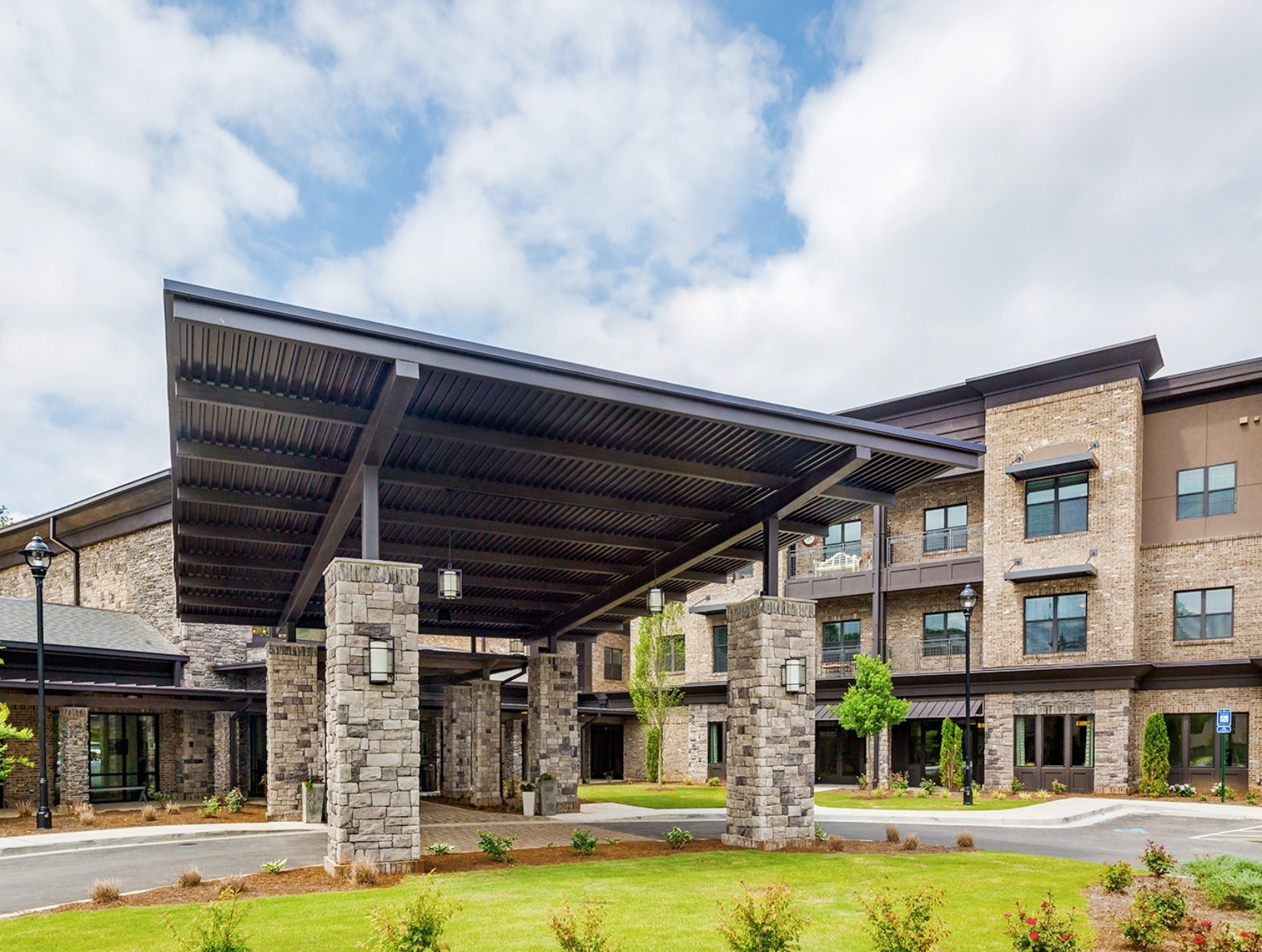
Sustainable design and building highlighted the architecture trends of 2019 and will continue to do so into the coming year. As architectural design moves toward smaller houses, look for more open-concept and multifunctional spaces in 2020 as well as an increasing commitment to zero-energy residences.
Looking Back: Architecture Trends of 2019
Smaller, multifunctional spaces and built-in storage.
It’s not just on TV that homeowners have been doing more with less (think HGTV’s Tiny House,
Big Living). A new generation of homeowners is intent on avoiding the McMansions of previous
generations in favor of smaller homes that not only exhibit a decreased environmental
footprint but can do more with less space. That means multifunctional living spaces (for
relaxing, cooking, and telecommuting) and lots of built-in storage.
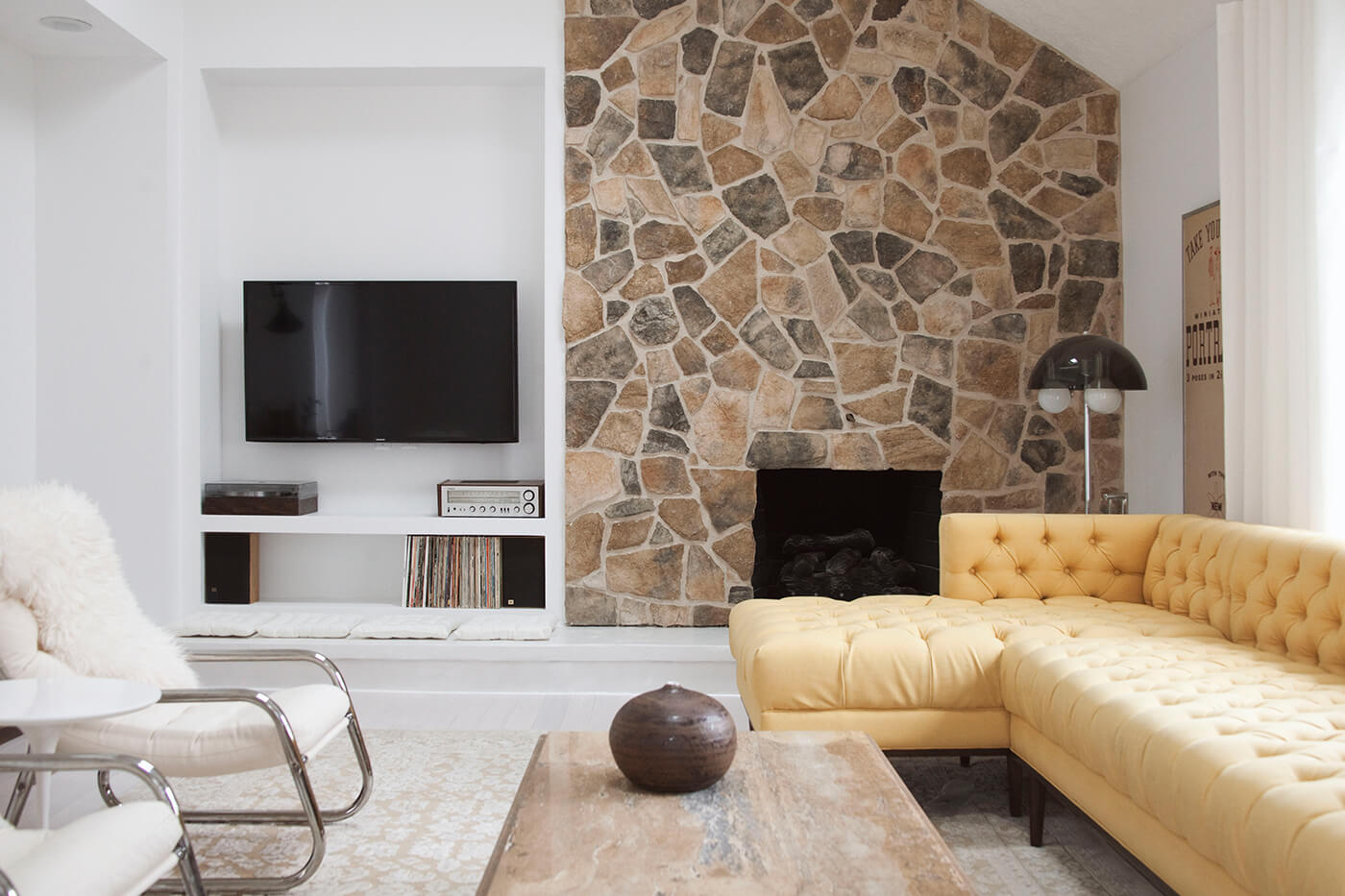
Architects have responded to clients’ desires for homes with smaller footprints, often in urban
areas where space is at a premium already, with architectural styles that incorporate a lot of
natural lighting to create a sense of spaciousness even in small rooms, multilevel living, and
innovative built-in storage solutions that often go so far as to stow beds and chairs when not in
use.
Cultured Stone has helped many architects meet the challenges of small-space design by
providing stone veneer features in shades of white and bright gray to enhance the sense of
lightness and space while still providing texture in smaller rooms and buildings. Pro-Fit® Alpine
Ledgestone in Winterhaven™ offers a real stone feel without being oppressive, while Cultured
Brick® Veneer—Handmade Brick in Canvas™ gives a light-reflecting yet industrial edge to the
warmth of traditional brick, making it ideal for use in smaller spaces.
Rehabilitated spaces and local sourcing.
With the increased attention on reducing environmental footprints when designing and
building residential architecture, more and more designers have been reinventing existing
spaces. Rather than starting from scratch, the new architecture trend of 2019 was to
rehabilitate existing structures for a modern family—whether that meant turning a factory into
industrial-style apartments or redesigning a mid-century modern home for the social demands
and trends of today’s families.
Rehabilitating existing structures not only reduces environmental impacts but may also reduce
costs compared to entirely new construction and offers tax incentives for both builders and
homeowners.
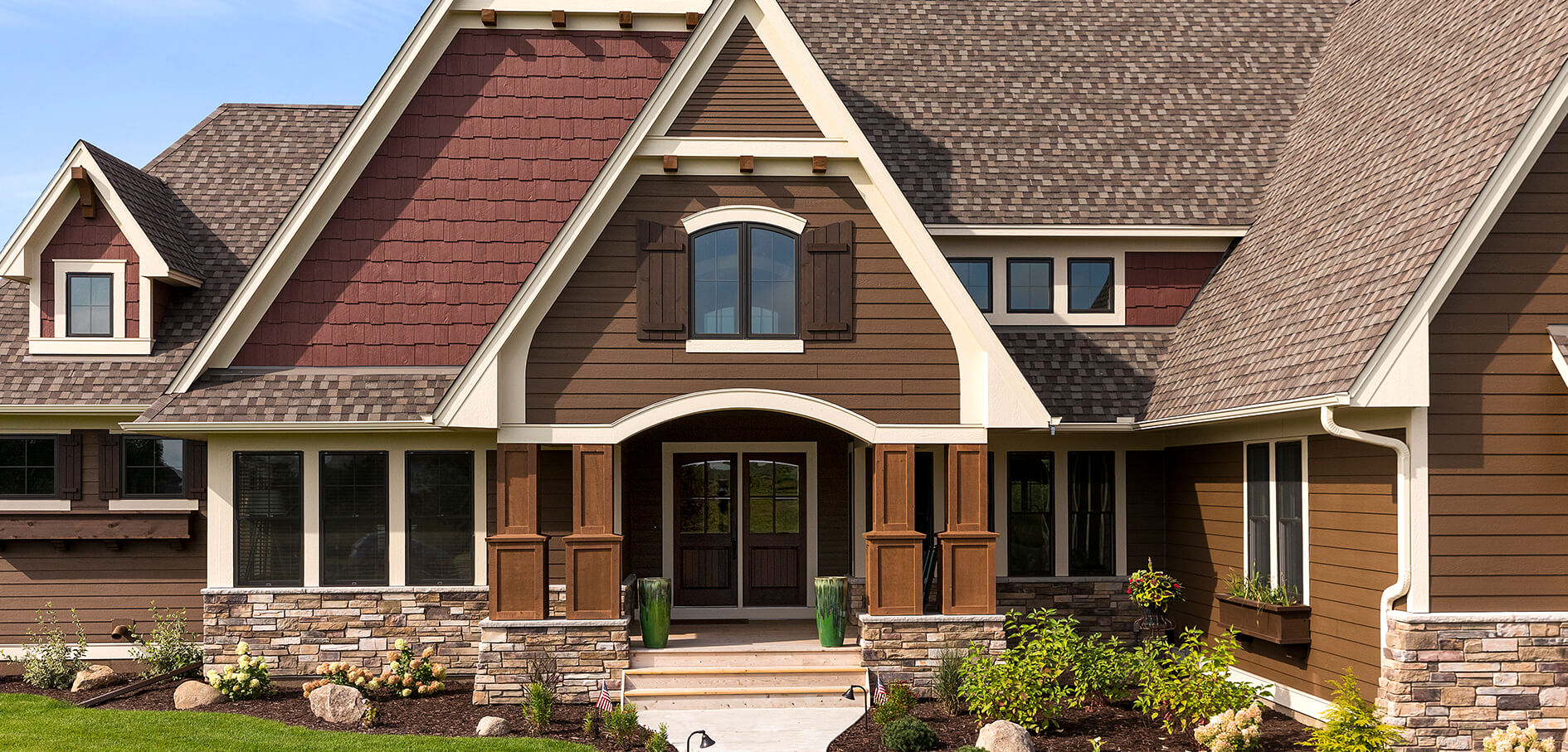
And while we often think of natural and locally sourced materials as more environmentally
friendly, this isn’t always the case. Architects and builders have faced increasing challenges in
making sure adaptive reuse, local sourcing, and natural materials actually are more responsible
choices. In some cases, man-made materials have represented better choices for making what’s
old new again, whether that’s replacing damaged slate roofing with metal or replacing
crumbling stone features with faux stone.
Industrial Design
While rustic farmhouse style has been dominating residential architecture for several years,
industrial design moved firmly into the residential space in 2019. Defined by asymmetrical
forms in architectural design and construction as well as the melding of textures like metal,
wood, and even plastic, the trending homes of the last year have been all about smooth and
simple lines and the absence of surface elements and disruptions.
Cultured Stone’s Sculpted Ashlar in Silver Shore played easily into this trend with architects
employing the manufactured stone as a full-wall backdrop in modern kitchens. The result is a
smooth gray surface in a sleek, modern kitchen that takes the place of the usual tile or
wallpaper.
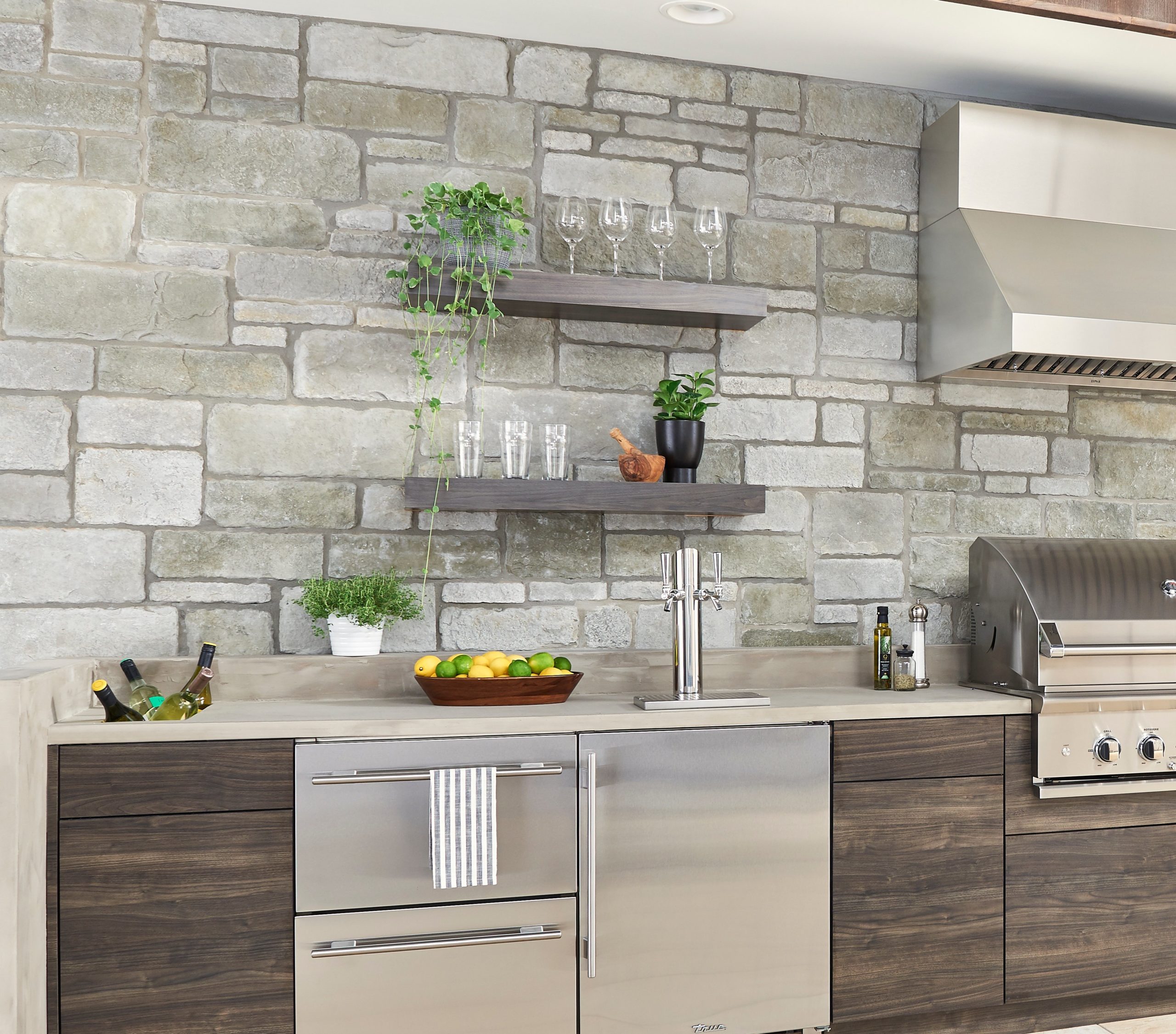
What’s Coming in 2020?
Net-zero Will Hit the Mainstream
The U.S. Energy Information Administration reports the building sector was responsible for
nearly 40 percent of energy consumption in the United States in 2017. This is enough to give
anyone in the building industry pause when it comes to creating more sustainable buildings and
will, along with homeowner demand, fuel the construction of significantly more net-zero
residences in the coming years.
California is leading the way in requiring new residential construction to be net-zero starting in
2020. And while there are no such mandates in the other 49 states as of yet, net-zero
construction has become increasingly common and stands to be the norm in new construction
in the coming decades. In fact, the Rocky Mountain Institute indicates that in the next few
years, it will likely be no more expensive to build a net-zero home than a conventionally built
one.
This means starting building projects with smart design and energy modeling. Doing so will help
establish the best siting for homes to take advantage of natural energy savings (like passive
solar heating), the most sustainable materials, and the best options for no-cost energy (from
solar to geothermal).
Open Concept to Segmentation Without Walls
While open floor plans have been a design trend in residential architecture for decades now,
the last year has seen an increasing move toward interior architectural styles that, while still
wedded to open concept design, offer more defined spaces…without walls. This means
architects are using shifts in building materials (perhaps a freestanding fireplace dividing a living
space from a dining area or a transition from hardwood floors to tile) to segment spaces within
the home.
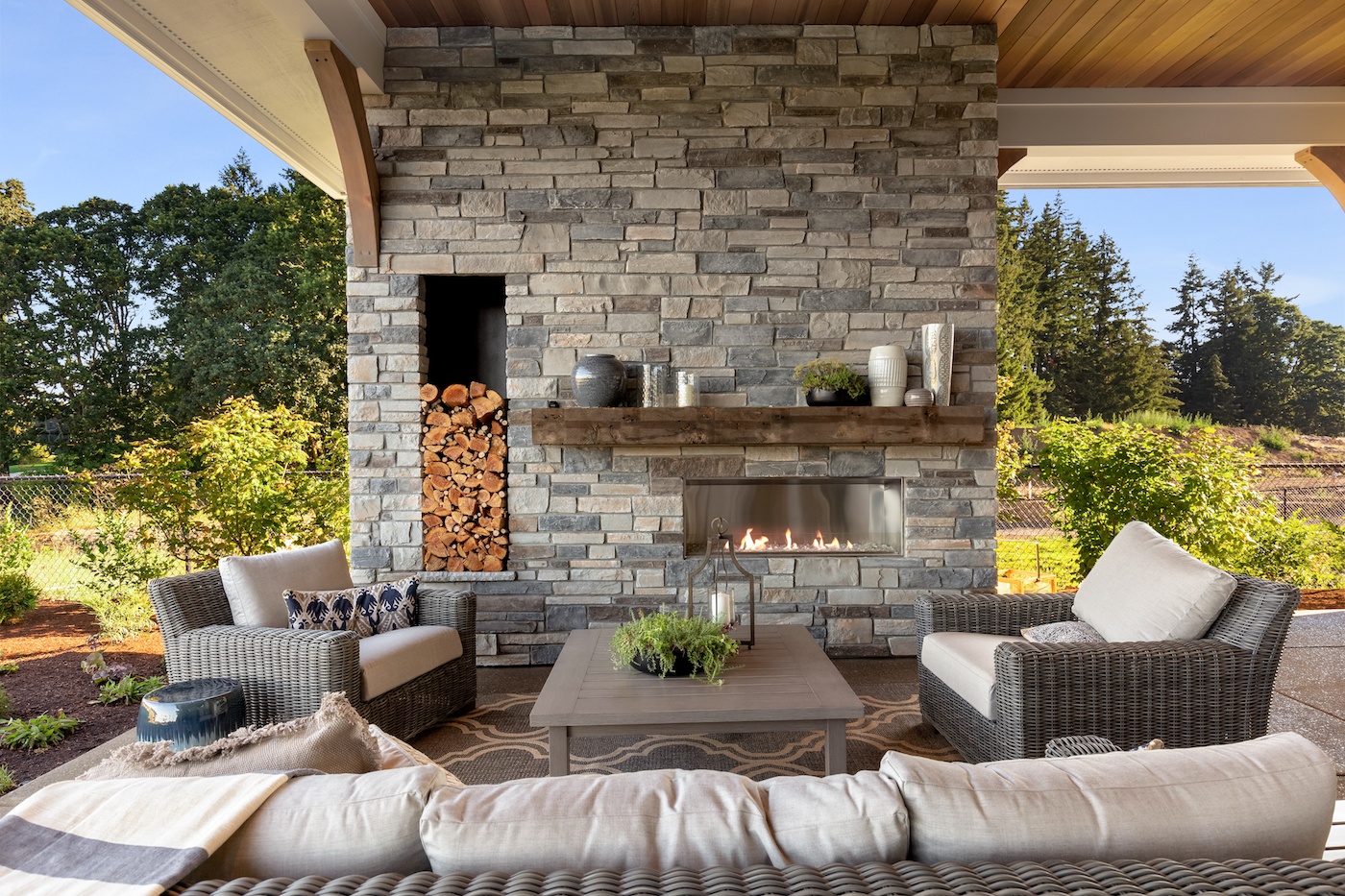
There are endless options for establishing transitions between spaces without using actual
walls. Consider a kitchen island that separates cooking space from family activity space, like a
sleek and modern kitchen island with a Pro-Fit® Modera™ Ledgestone base that divides the
cooking area from the living room, while a fireplace of the same faux stone serves to
nevertheless unite the spaces.
Architects may also use differing materials to define spaces, perhaps moving from flat painted
walls in a dining room to an accent wall of faux stone that establishes a living area as a separate
space or transitioning from a tile floor in a kitchen to a complementary wood floor in an
adjacent open-concept dining space.
While stonework, natural or manufactured, can play a major role in the definition of individual
spaces within an open-space framework, manufactured stone provides a simpler and more
sustainable option. Manufactured stone is a more versatile design component for architects
and builders, offering an easier installation process and providing an earth-friendly alternative
to natural stone.
As you plan your next building project for 2020, Cultured Stone’s client onboarding questionnaire can help guide you and your clients toward new architecture trends in the design of sustainable and beautiful homes.